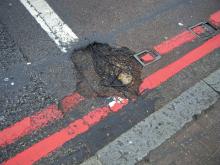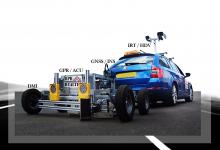A researcher based in Canada is carrying out a research project in the form of a survey assessing the safety risk posed by wildlife to drivers. The risk posed by wildlife to those travelling in vehicles can be severe in some areas and evaluating data can be important for assessing risk levels and awareness of risk levels amongst road users. There is the potential for serious injury or even death in the event of crashes with large animals or at high speeds. Meanwhile a driver avoiding an animal in the roadwa
A researcher based in Canada is carrying out a research project in the form of a survey assessing the safety risk posed by wildlife to drivers. The risk posed by wildlife to those travelling in vehicles can be severe in some areas and evaluating data can be important for assessing risk levels and awareness of risk levels amongst road users. There is the potential for serious injury or even death in the event of crashes with large animals or at high speeds. Meanwhile a driver avoiding an animal in the roadway meanwhile can lead to loss of control and a collision with a roadside obstacle or another vehicle, again with a risk of death or injury.
Leonard Sielecki is carrying out the research as part of his PhD programme at the University of Victoria. This web-based survey is investigating the opinions of driver on a wildlife hazard warning system that was developed at the university. There are both Canadian versions and US versions of the survey, including respective measurements in km and miles and spellings of certain words, although in other respects they are the same.
Sielecki says that early results show most drivers would like to know how wildlife hazard levels vary from location to location over time. The system was developed to give drivers more information about wildlife hazards on roads and highways. It is designed to let drivers know how wildlife hazards change from place to place, during different times of the year on roads and highways.
The survey is being carried out anonymously so no personal information, such as a name, or address, or any other identifying information is requested or will be recorded. The survey takes about 5 to 7 minutes to complete. All participants will need to read an online consent form before they start the survey.
There are separate links for the %$Linker:2 External <?xml version="1.0" encoding="utf-16"?><dictionary /> 0 0 0 oLinkExternal US survey Visit US Survey page false http://uvic.fluidsurveys.com/surveys/42-1a0649fe9081f2912761ccefc7d/wildlife-hazard-warning-system-survey-2016-usa false false %> and the %$Linker: 2 External <?xml version="1.0" encoding="utf-16"?><dictionary /> 0 0 0 oLinkExternal Canadian survey Visit Canadian Survey page false http://uvic.fluidsurveys.com/surveys/42-1a0649fe9081f2912761ccefc7d/copy-wildlife-hazard-warning-system-survey-2016 false false %>
Leonard Sielecki is carrying out the research as part of his PhD programme at the University of Victoria. This web-based survey is investigating the opinions of driver on a wildlife hazard warning system that was developed at the university. There are both Canadian versions and US versions of the survey, including respective measurements in km and miles and spellings of certain words, although in other respects they are the same.
Sielecki says that early results show most drivers would like to know how wildlife hazard levels vary from location to location over time. The system was developed to give drivers more information about wildlife hazards on roads and highways. It is designed to let drivers know how wildlife hazards change from place to place, during different times of the year on roads and highways.
The survey is being carried out anonymously so no personal information, such as a name, or address, or any other identifying information is requested or will be recorded. The survey takes about 5 to 7 minutes to complete. All participants will need to read an online consent form before they start the survey.
There are separate links for the %$Linker:






